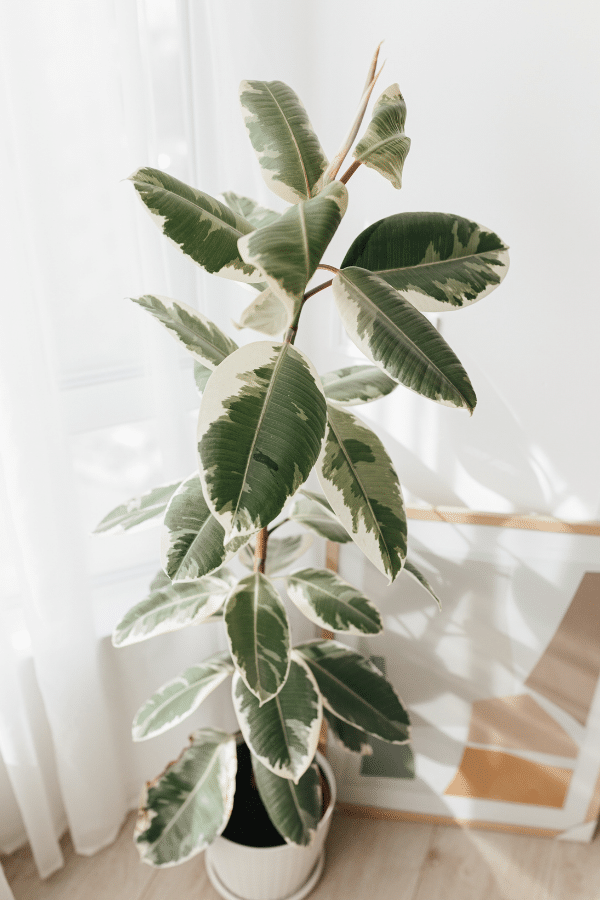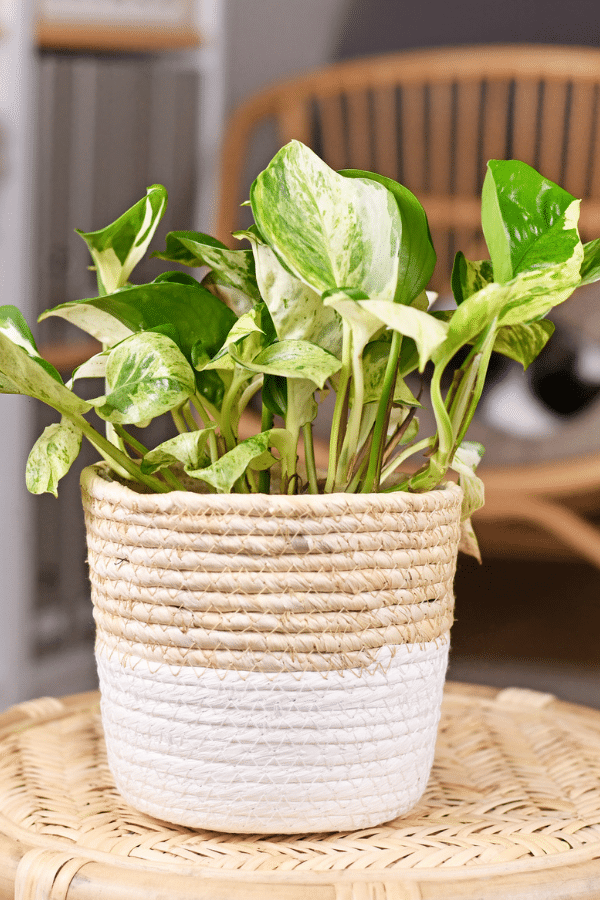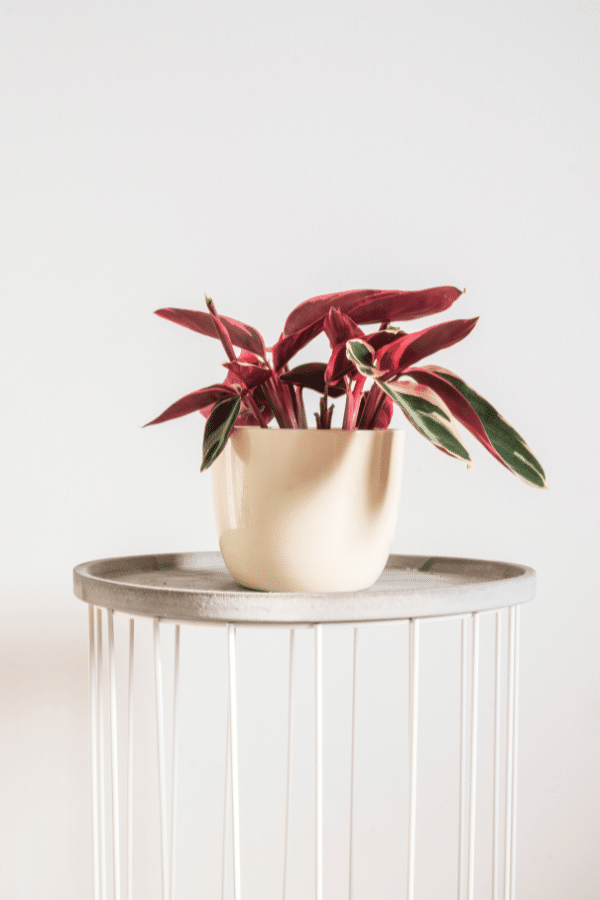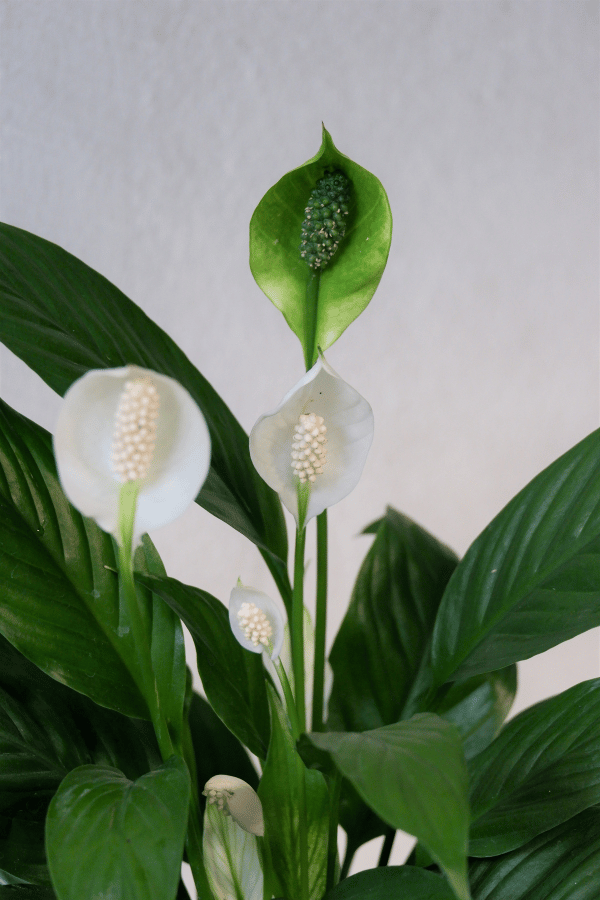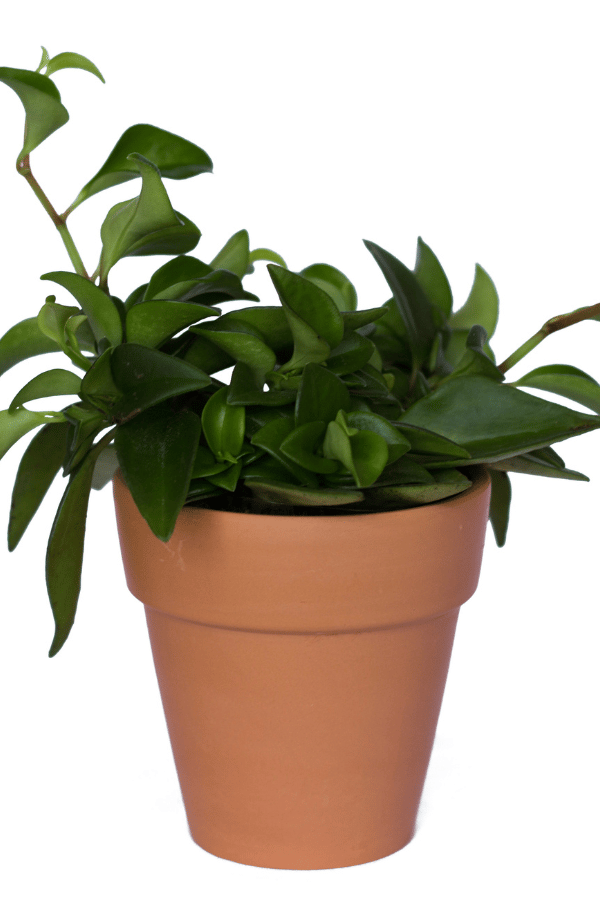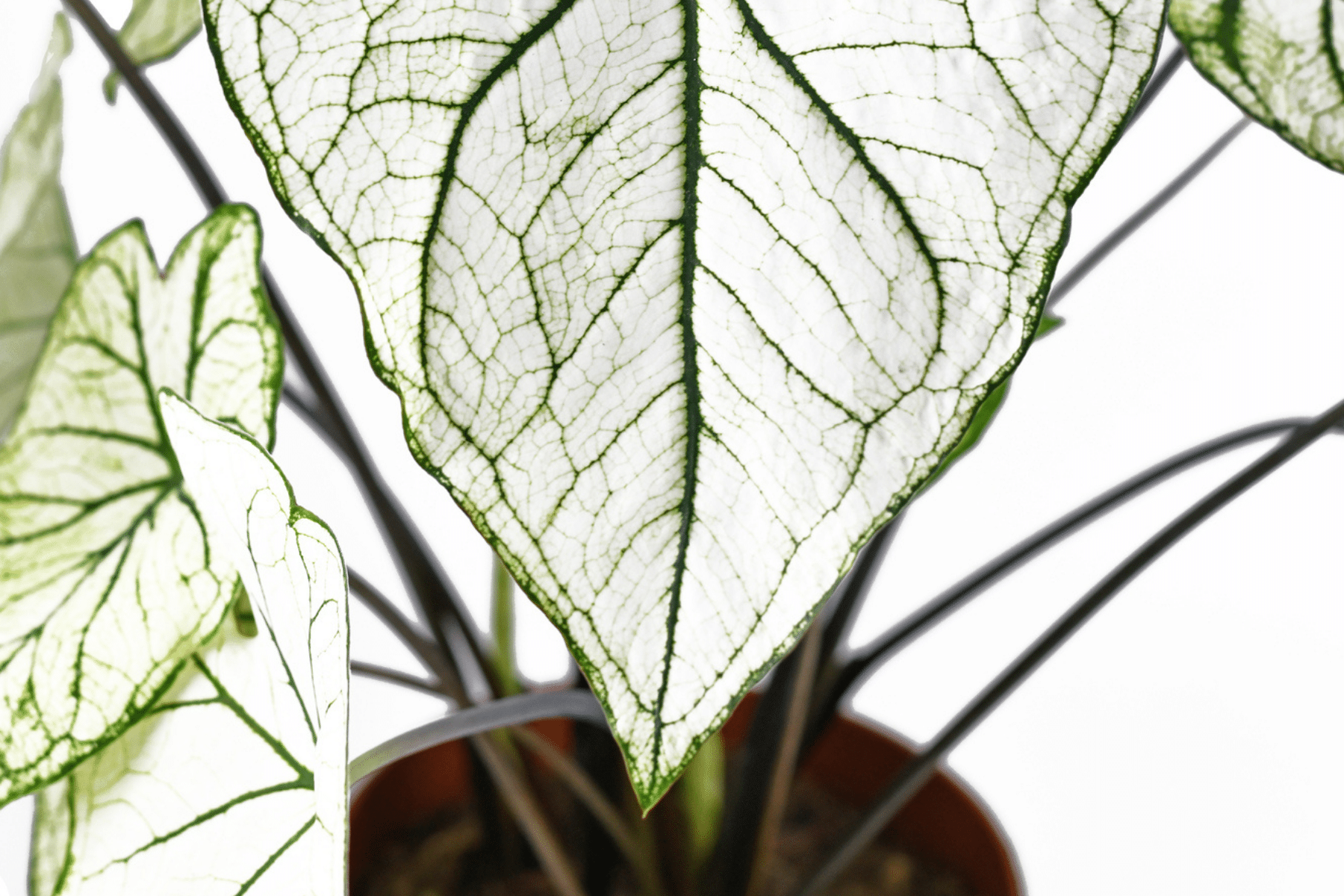Calathea Vittata
Scientific Name: Calathea Vittata
Calathea Vittata care is easy with the correct care items we’ll outline in this article. If you are looking for a new houseplant that’s pet friendly and perfect for a tabletop or shelf, keep reading and see if a Calathea Vittata is a good indoor plant for you.
To give this Calathea plant the best care, it requires well-draining soil that can retain moisture, keep the soil moist by providing it lots of water, provide it with bright indirect sunlight, give it temperatures ranging from 65-75F, and high humidity levels of around 60-70%.
Quick Care Overview
| Common Name | Prayer Plant, Calathea Vittata |
| Scientific Name | Calathea Vittata |
| Family | Marantaceae |
| Origin | South America – Brazil, Bolivia, Colombia |
| Growth Rate | Medium |
| Identification | Medium to large leaves with white stripes |
| Height | Up to 24 inches tall |
| Soil | Well-draining soil with moisture retention |
| Water | Keep consistently moist but not soggy |
| Temperature | 65-75F |
| Sunlight | Bright indirect light |
| Toxic to Cats & Dogs | No |
| Toxic to Humans | No |
| Pests | Mealybugs, spider mites, aphids, fungus gnats |
| Diseases | Leaf spot, root rot |
Below we will dive deep into this Calathea Vittata care guide.
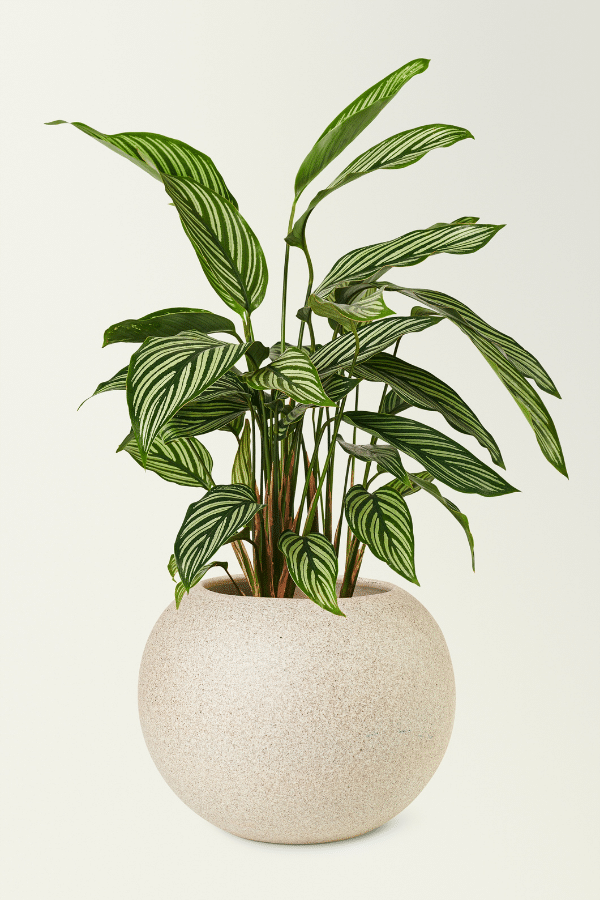
Calathea Vittata History
Calathea Vittata, a member of the prayer plant family (Marantaceae), is a gorgeous tropical plant with oversized decorative leaves with stunning white variegation. This short plant is perfect for tabletops or other places requiring a small accent within your home’s decor. Being a prayer plant, the leaves have a habit of folding up and down in relation to the sun. Calathea Vittata is native to the tropical Americas, like Brazil, Bolivia, and Colombia.
Calathea Vittata Identification
Calathea Vittata has gorgeous white lines detailing their evergreen green leaves in a unique fashion. The foliage of this Calathea is long and pointy and may grow up to 20” long.
Calathea Vittata Growth Facts
Calathea Vittata is a quick-growing plant that will reach its mature size quickly.
How Big Does a Calathea Vittata Get?
Calathea Vittata will rarely grow above 24” tall when cultivated indoors.
Calathea Vittata Care
Being a very low-maintenance plant, Calathea Vittata is perfect for beginners or those who do not have much time to spend on plant care.
Calathea Vittata Soil
Calathea Vittata enjoys being grown in a moisture-retentive, well-draining growing medium such as an African violet mix or a mixture of two parts peat moss or coco coir, two parts perlite, to one part potting mix. However, as this is a very fast-draining soil mix, it will dry out quicker and require that you water your plant more frequently. Otherwise, you can mix together orchid bark, charcoal, peat moss, and perlite evenly to get a good, rich soil.
Calathea Vittata Fertilizer
To maintain vibrant, lush foliage, this Calathea will need to be fertilized monthly during the warm growing season of spring and summer. Select a balanced liquid fertilizer and dilute it to about half. Ensure that you follow all label instructions. It is vital that you do not use too much fertilizer and that you do not fertilize during the fall or winter.
Calathea Vittata Watering
This Calathea can be finicky when it comes to its watering needs. It likes to remain consistently moist but not soggy during the warm growing season and requires consistent watering. Water frequency needs to be drastically reduced in the colder months; otherwise, this plant can quickly become overwatered. Ensure that you need to water the plant by sticking your finger about 2″ deeper into the soil and ensuring it is dry before you rewater. It is important to note that this plant is a bit finicky about tap water, specifically the chemicals in fluoride salts, and chlorine. Rainwater, distilled water, or filtered water is preferred when watering this Calathea as in its natural habitat it only receives rainwater.
Calathea Vittata Light Requirements
While Calathea Vittata can tolerate low light conditions, it likes to be kept in bright indirect light, such as from an eastern or western facing window. However, this plant should never be kept in direct sunlight, as this will quickly lead to leaf burn. Alternatively, too little light will lead to slowed, leggy growth.
Calathea Vittata Temperature & Humidity
Being a tropical plant, Calathea Vittata likes to be kept in warm temperatures between 65 to 75 degrees. This plant will become fussy if kept below 60 degrees and should never be kept in cold temperatures. It is important to note that this plant should also never be kept near vents, air conditioners, heaters, or cold windows. Calathea Vittata enjoys being grown in high humidity between 60-70%. Therefore, humidity levels should be raised in the home by installing a humidifier or pebble tray underneath your plant. Alternatively, this plant may be kept in a bathroom to meet its humidity requirement, as long as it has sufficient lighting.
Repotting Calathea Vittata
Depending on growing conditions, you should repot your Calathea about once every two years. Potting should be done in early spring whenever roots are seen sticking out of the container’s drainage holes. Repotting is an excellent time to propagate, as this will minimize the frequency in which the plant is stressed from removing the plant from the pot.
Calathea Vittata Maintenance & Pruning
As this Calathea remains relatively compact in size, it often does not require pruning, except for cosmetic reasons and to maintain shape. Discolored, dead, or disease foliage may be removed periodically. Leaves may also be cleaned with a damp cloth to remove dust every few weeks.
Calathea Vittata Propagation
Propagation of your Calathea Vittata is easy through root division. Sadly, this plant cannot be propagated through leaf cuttings. To propagate this plant, simply take your Calathea out of its container, remove excess dirt from the root ball, and divide the root ball into sections. If the section’s roots are heavily entangled, use a sharp blade to separate the sections from each other. Plant each plant segment into its own container, fill with fresh soil, lightly tamp, and water thoroughly. Place your newly potted plants into indirect medium light. Always propagate in the summer and spring seasons.
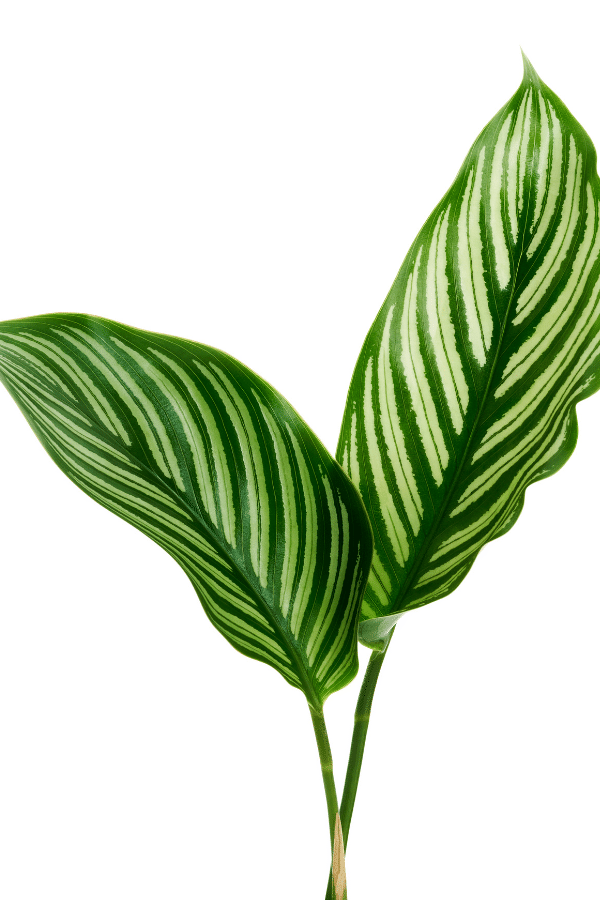
Calathea Vittata Toxicity
Like other Calathea varieties, the Calathea Vittata is non-toxic and safe for use around children and pets.
Toxicity to Humans
Calathea Vittata is not considered toxic to humans and is safe to be kept around children. However, this plant should not be consumed.
Toxicity to Cats & Dogs
Calathea Vittata is not considered to be toxic to pets and is safe for them to be around. However, this plant should not be consumed as it may cause digestive upset.
Calathea Vittata Problems
Calathea Vittata Leaves Turning Yellow
One of the most common causes of foliage having yellow leaves is from temperature fluctuations. This Calathea is very sensitive to cooler temperatures.
Calathea Vittata Leaves Turning Brown
One of the most common causes of leaves turning brown in this Calathea variety is due to chemicals in tap water or overfertilizing. This plant is very sensitive to chemicals in tap water and ideally should be watered with rainwater or distilled water.
Calathea Vittata Diseases
Calathea Vittata may become susceptible to plant disease, likely due to overwatering. Common issues of this plant are leaf spot and other moisture-related fungal infections that may cause the death of the plant.
Calathea Vittata Pests
Calathea Vittata is not prone to pests. However, it may become susceptible to bugs such as mealybugs, spider mites, fungus gnats, or aphids. However, these pests may be treated with a pesticide such as neem oil or insecticidal soap.

